
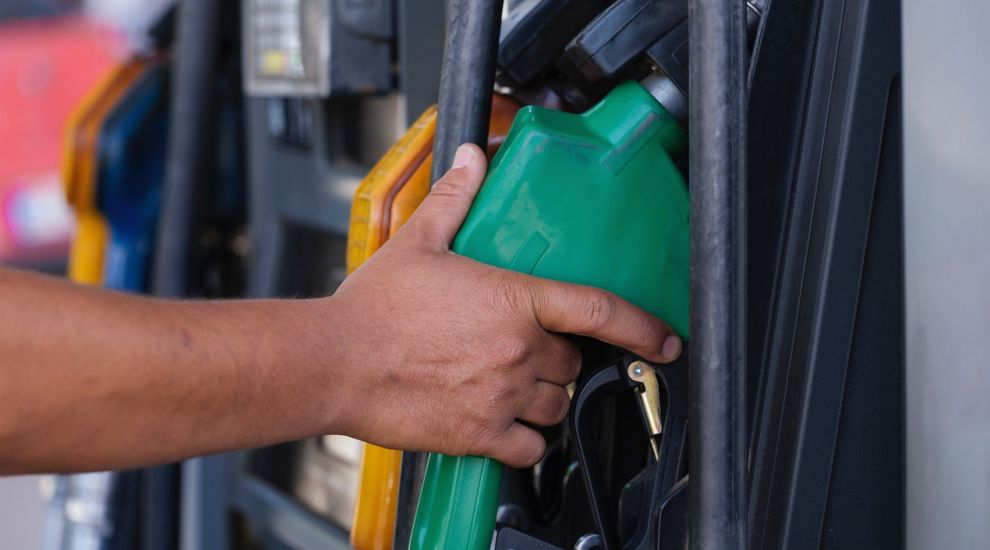

As the island tries to make moves towards net zero... What does our energy supply situation look like at the moment? Are we managing to reduce our dependence on fossil fuels?
According to a new report by Statistics Jersey, the island Jersey is still reliant on non-renewable energy for more than 60% of its energy supply, despite aims to be carbon neutral by 2030 and have net-zero greenhouse gas emissions by 2050.
The Energy Trends report shows that petroleum products accounted for about three-fifths (61%) of Jersey’s energy supply, while electricity (both imported and on-island generated) accounted for the remainder (39%).
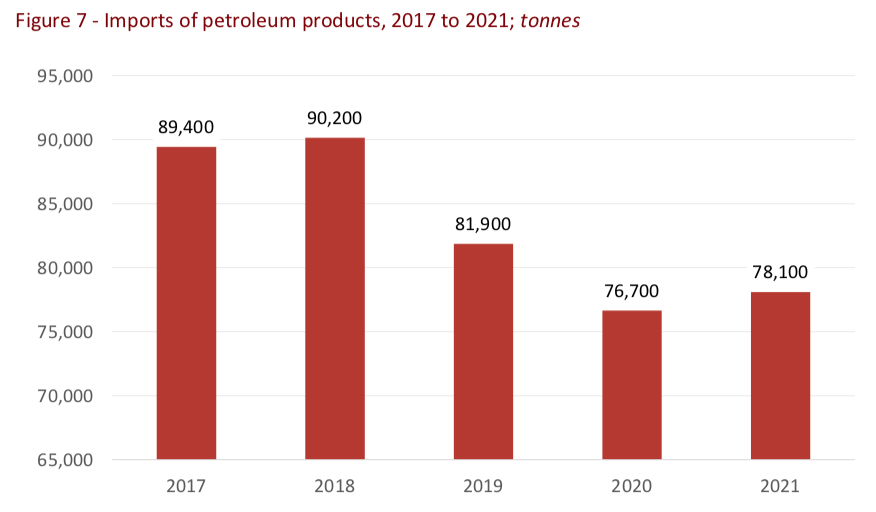
Pictured: The increased importation of electricity through submarine cables has led to a a considerable reduction in the importation of petroleum products, however it still accounts for over 60% of Jersey's energy supply.
The category ‘petroleum products’ covers a range of fuels derived from crude oil.
All the petroleum products supplied and used in Jersey are imported; around 78,000 tonnes of petroleum products were imported in 2021, a similar amount to 2020.
Some of these imports were used to generate electricity and produce manufactured gas. Since the 1990s, there has been a considerable reduction in the use of petroleum products to generate electricity in Jersey. This was a result of the increased importation of electricity through submarine cables.
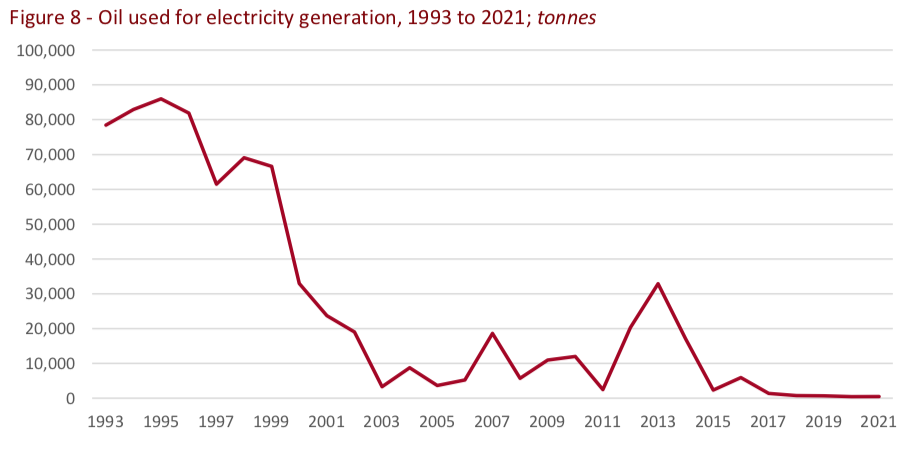
Pictured: In the early 1990s around 80,000 tonnes of oil were used each year to generate electricity on-Island. In 2021 this figure had reduced to 493 tonnes.
Petrol and motor diesel consumption has generally declined from 2017 to 2020, then increased slightly from 2020 to 2021 as people began using their cars more often again after the pandemic. Overall, there has been a general decline in the long-term consumption of petrol and motor diesel, since the mid 1990s.
The government's Carbon Neutral Roadmap outlines plans to improve the emissions performance of the vehicles we use for private journeys.
Electric vehicles are currently the only widely commercially available alternative to petrol or diesel engine vehicles, with all global automotive manufacturers now selling passenger electric vehicles.
However, the transition to electric vehicles will take time as vehicles are replaced as they come to the end of their lives.
In the mean time, there are a number of different low-carbon alternatives to traditional petrol and diesel now available on the market. Second generation renewable diesel (SGRD) is a high-quality fuel made from hydrotreated vegetable oils, waste food and meat processing by-products. Second generation renewable diesel can be used as a direct replacement for fossil diesel.
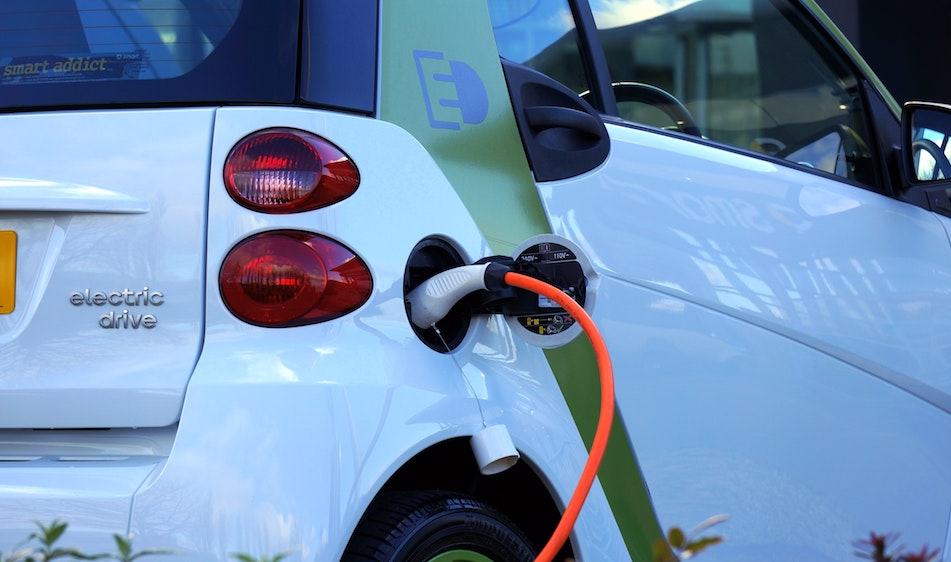
Pictured: Electric vehicles are currently the only widely commercially available alternative to petrol or diesel engine vehicles.
The Government will encourage the use of election vehicles by subsidising the cost of an electric vehicle at the point that it is first registered on the Island (for both new and imported second-hand vehicles).
This scheme will run from 2022 to 2027, and for every electric vehicle subsidised, a petrol or diesel vehicle must be deregistered from the Island.
Continue to offer subsidised public parking for electric vehicles as well as exempting electric vehicles from planned increases in vehicle emissions duty.
It will also become increasingly expensive to buy and run a petrol or diesel car.
The Energy Trends report for 2021 also looked the energy consumption per head of resident population in Jersey, which is below that of the UK.
The standardised unit of energy is the toe (tonne of oil equivalent) which represents the quantity of energy released through burning one tonne of crude oil: 1 toe = 11,630 kWh or 10 million kilocalories.
Jersey's energy consumption per head of resident population was 1.4 toe which is below the UK's 1.9 toe of energy used per person.
Energy is supplied to Jersey predominantly through imports, with only about 2% being produced on-Island as electricity generated by the Energy Recovery Facility and Jersey Electricity solar panels.
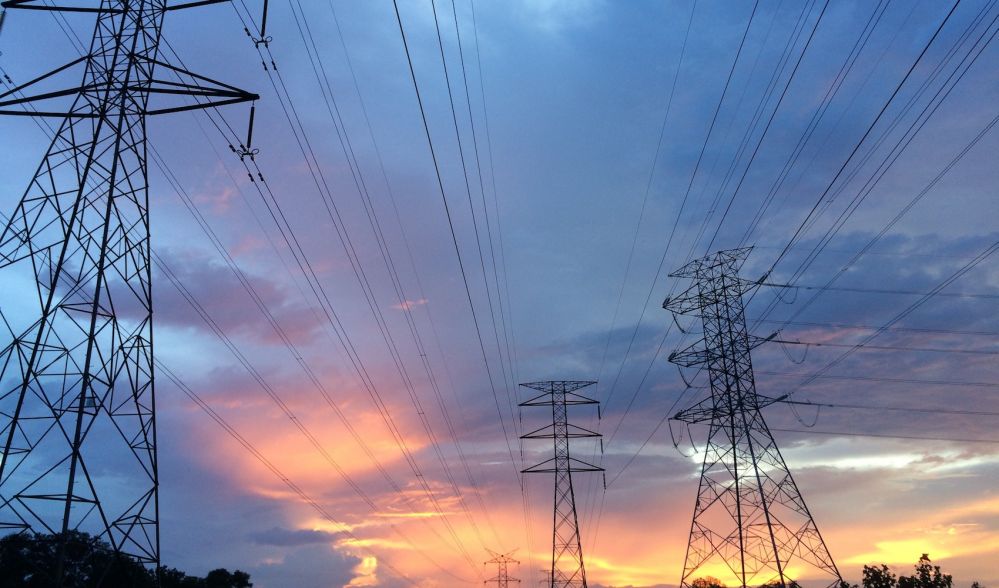
Pictured: 98% of Jersey's energy is produced off-island.
Total primary energy supply (TPES) is defined as the total energy which a jurisdiction imports and produces from its own natural resources, accounting for any changes in stock, and subtracting any exports.
Jersey’s total primary energy supply (TPES) in 2021 was 6% more than in 2020, however this increase is likely due to the global pandemic.
The long-term behaviour of Jersey's TPES suggests a reduction in level. A key factor in this reduction is attributed to the increase in imported electricity and the complementary decrease in imported petroleum products for on-Island electricity generation.
A further reduction to around 140,000 toe was seen in 2020, followed by an increase to almost 150,000 toe in 2021. The onset and subsequent easing of the global pandemic is likely to have influenced TPES in the last 2 years.
The report attributes the general downward trend in TPES since 2007 to a range of factors, including a reduction in the use of kerosene for domestic heating and of motor fuels for transportation.
Final energy consumption (FEC) refers to the use of energy by final consumers, either as a primary commodity or as a secondary commodity after any transformations have occurred. The use of energy by the energy industry itself and losses due to transmission and distribution of energy are excluded from FEC.

Pictured: Of total energy used on the island, just under half (42%) was by households.
Over the 3 years from 2017 to 2019, FEC had been relatively stable at around 150,000 toe, with slight differences due to the effect of warmer or colder winters.
From 2019 to 2020, FEC in Jersey decreased by 10% to 134,753 toe. This will have been driven in part by reduced demand for certain fuels as an effect of the global pandemic. From 2020 to 2021, FEC increased by 6% to 143,041 toe in 2021 as the impact of the pandemic reduced.
Of total energy used, just under half (42%) was by households, around a third (31%) for transportation (predominantly road) and a similar amount (27%) by industry and government.
Comments
Comments on this story express the views of the commentator only, not Bailiwick Publishing. We are unable to guarantee the accuracy of any of those comments.